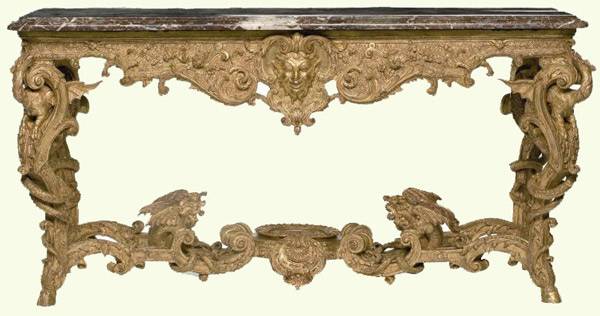Knowledge Center
Louis XIV (1661-1700)
Drawing inspiration for ornamental motifs from mythology, flora, fauna, architecture, and war, the period's ebenistes, or makers of luxury case furniture, were indeed servants of the Sun King, who saw himself as a brilliant, indeed universal personage. This period closed the age of multiple-use pieces and ushered in an era of individualized, use-specific furniture. Jean Charles Lebrun was in charge of the royal Gobelin works from 1667. Jean Berain followed him, introducing a lighter style. Andre Charles Boulle created revolutionary marquetry.

Furniture: The commode became very fashionable, as well as console tables, writing tables and desks. Chairs were varied, ranging from the high-backed padded armchair to the stool. Legs were figural, baluster and claw. Mirrors, chandeliers and candelabras became more common. The cabinet arrived from Italy.
Materials and techniques: Large solid-wood pieces were made of chestnut, walnut, or oak. They were sometimes left natural, sometimes painted bright colors such as red or green, even gilded or coated in silver. Ebony and precious woods were imported to Paris. Pear and natural woods were used in the provinces. Boulle marquetry alternated effects of various mineral and animal materials: brass, pewter and silver, along with horn, tortoise-shell, mother-of pearl, and ivory.
Ornament: Louis XIV ornament was characterized by rigor and symmetry, resulting in compositions imbued with balance and majesty. The sun was the royal emblem. The fleur-de-lis was used. Moldings remained thick. Motifs of human faces, gods, bearded fauns, nymphs, goddesses, allegories, arabesques, cornucopia and foliage abounded. Gilded bronze decoration was popular.
Source: French Furniture by Sylvie Chadenet